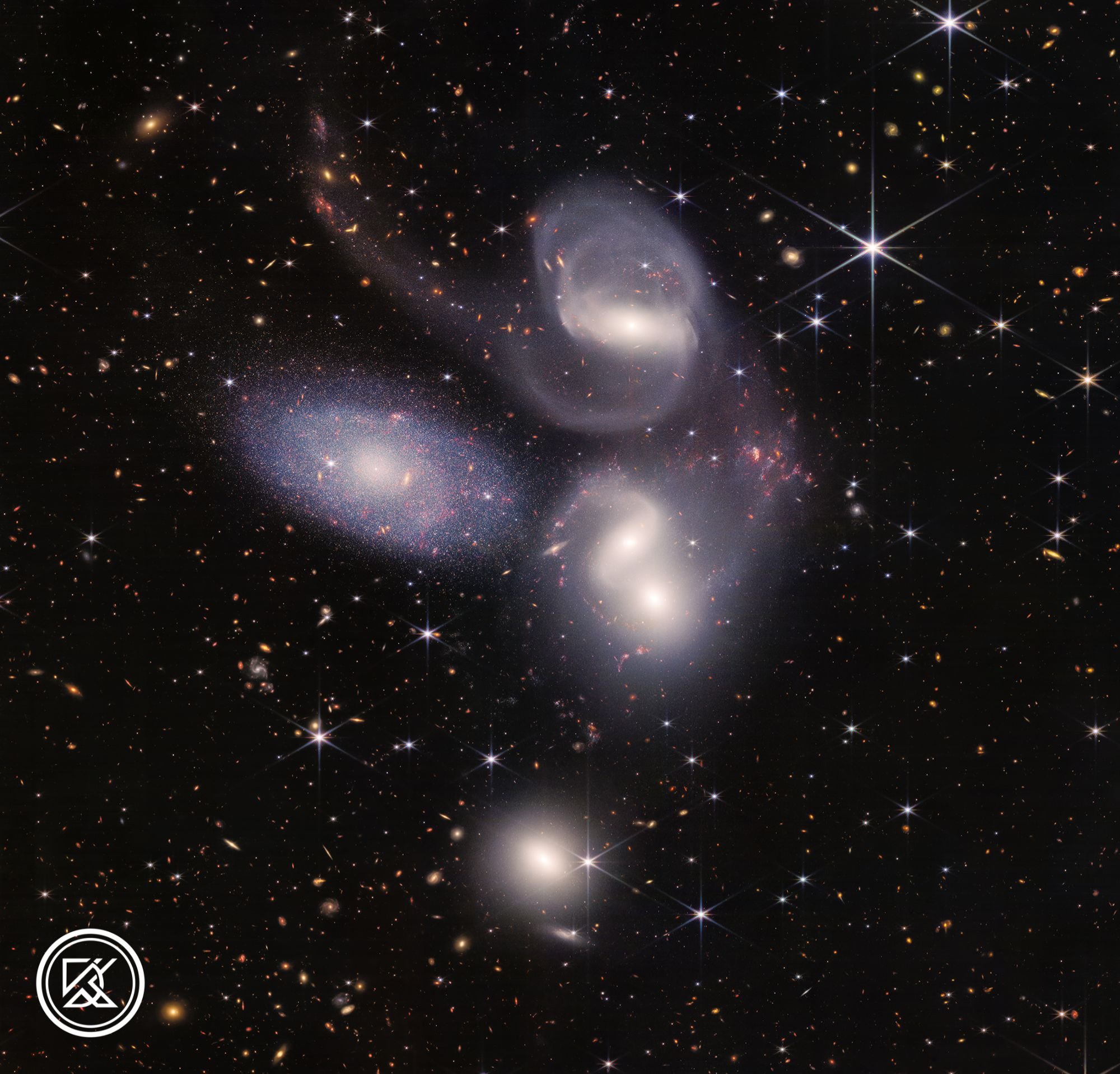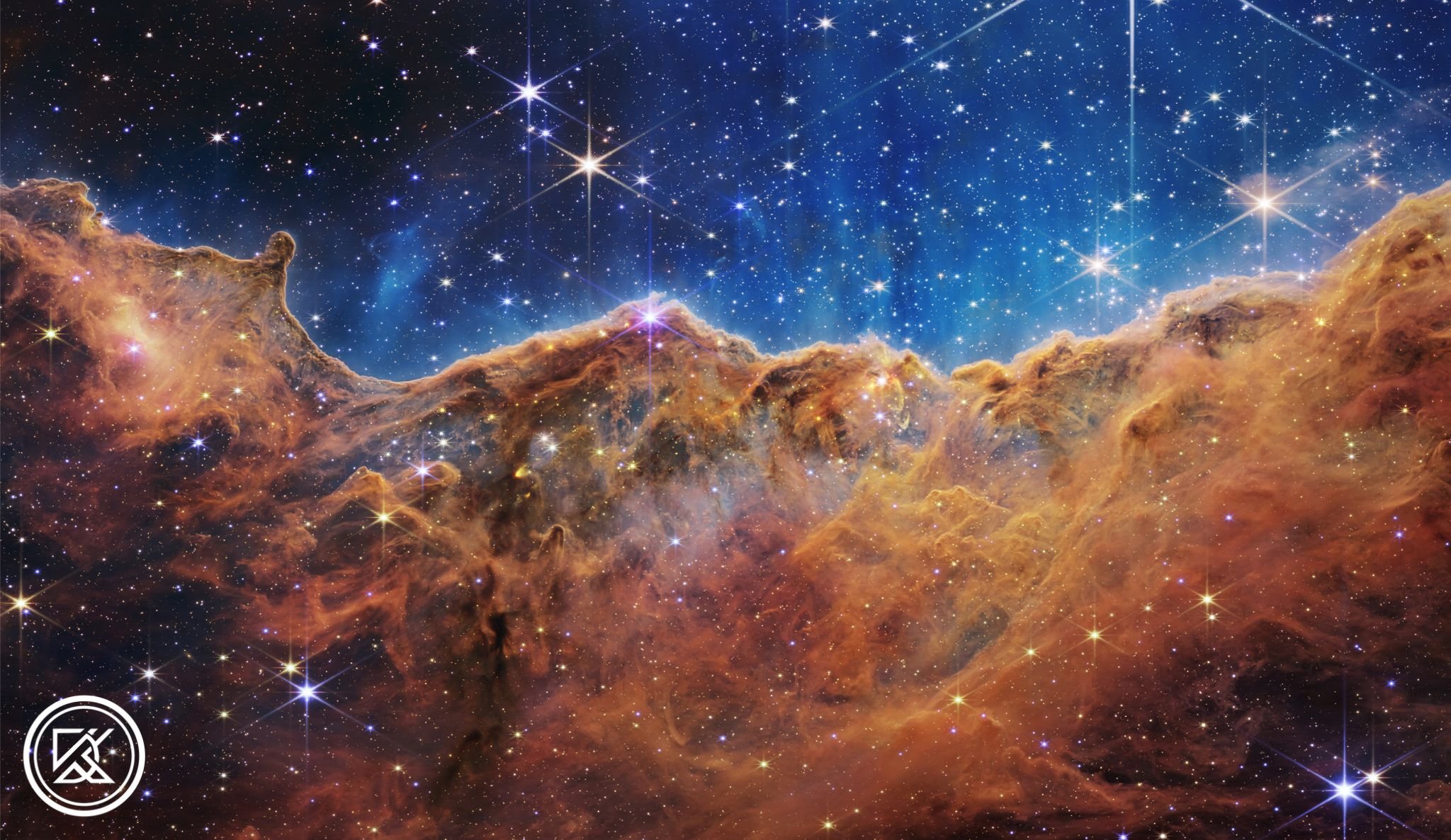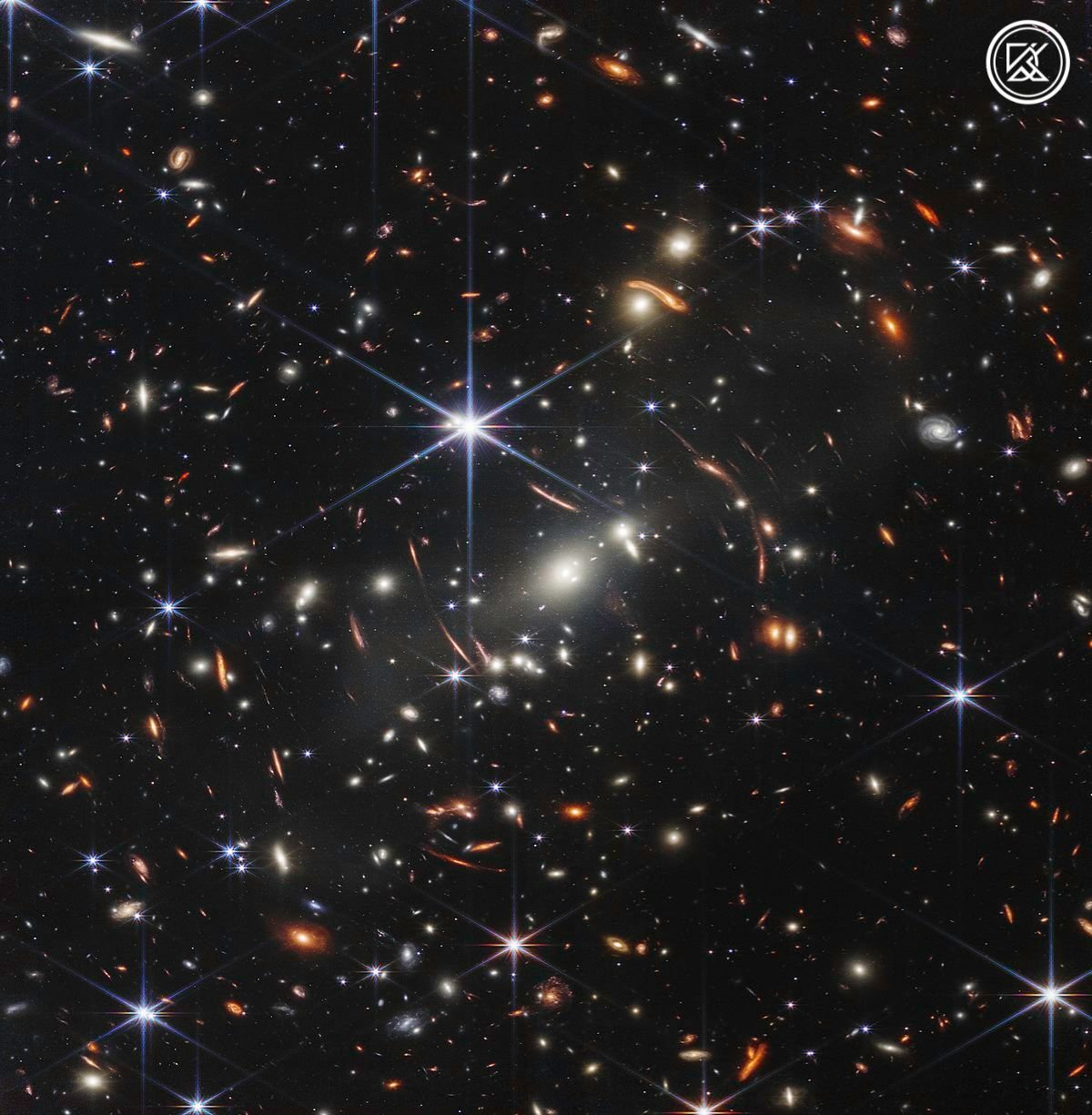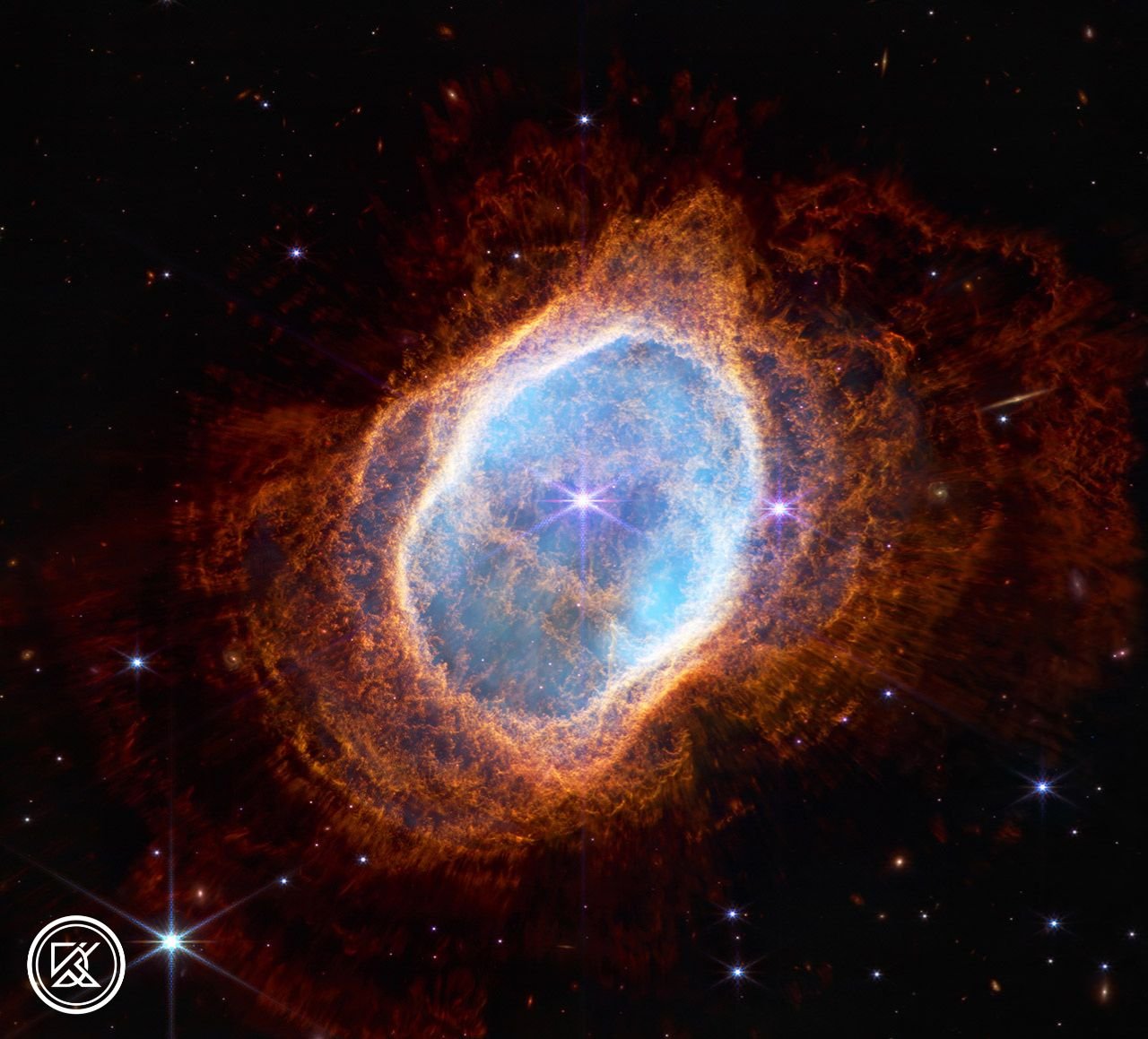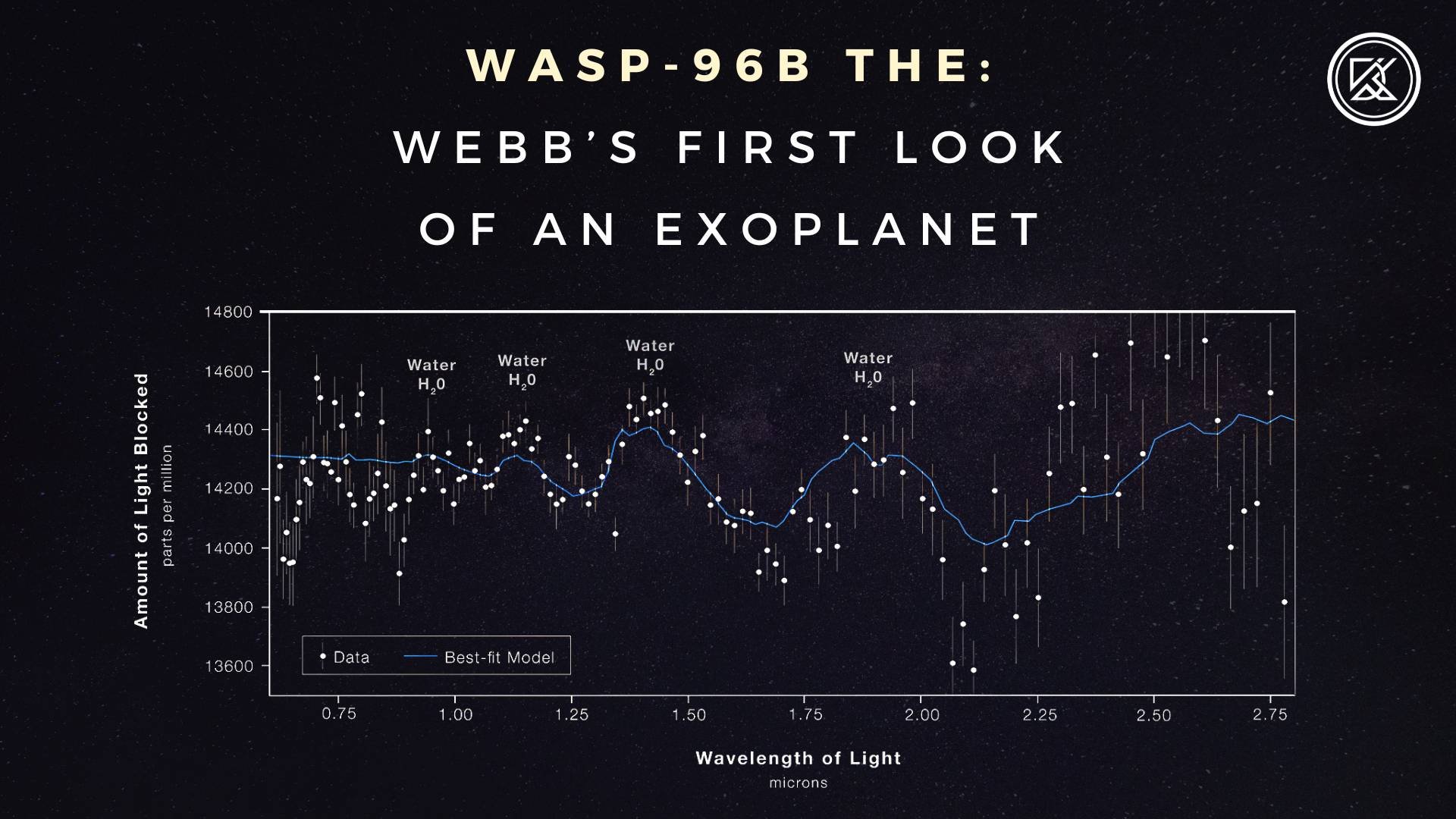A New Era of Astronomical Discovery
Driven by an insatiable curiosity about the universe, astronomers have relentlessly pursued its secrets, from the origins of the Big Bang to the mysteries of black holes that continue to baffle and intrigue scientists worldwide.
The Hubble Space Telescope, launched in 1990, marked a giant leap in our ability to observe the cosmos. Now, its successor, the James Webb Space Telescope, is revolutionizing our understanding. This international marvel, developed by a team from the United States, Canada, and Europe, is the most powerful telescope ever built.
Webb’s advanced technology allows us to peer into the distant past, observing the very first galaxies that formed after the Big Bang. These objects were previously invisible due to their faint infrared light. With Webb, we can finally study them and figure out what was going on in the early days of the universe.
A giant leap in space observation
The James Webb Space Telescope dwarfs its predecessor, the Hubble Space Telescope. Webb unfolds to the size of a tennis court, with a sunshield as tall as a four-story building. Thousands of minds contributed to its creation and launch.
Webb specializes in capturing infrared light, unlike Hubble’s limited infrared capability. This allows Webb to produce sharper images of distant objects and even peer through dust and gas clouds, revealing the cosmos in unprecedented detail.
Webb’s marvel lies in its 18 hexagonal mirror segments, each an impressive 1.32 meters wide. This innovative design allows the mirror to fold for launch and then unfurl in space – a crucial feature for such a massive telescope. Additionally, the mirror of the James Webb Space Telescope is a lightweight champion, weighing 113 kg less than that of the Hubble Space Telescope.
The power of beryllium
But why did scientists choose beryllium for the mirror segments, over other metals? This unique metal is the answer. Beryllium is both strong and incredibly lightweight. The key advantage lies in its ability to maintain its precise shape even at the frigid temperatures of space, where Webb will operate.
A touch of gold
Adding another layer of sophistication, each mirror segment is coated with a thin layer of gold, about the amount you would find in a golf ball. This gold coating plays a vital role, maximising the telescope’s reflectivity of infrared light – essential for its groundbreaking observation.
The James Webb Telescope: An insane piece of astronomical engineering
The James Webb Space Telescope operates in the infrared spectrum, offering a revolutionary view of the cosmos. Unlike visible light, infrared light can penetrate dust clouds, allowing us to peer into the formation of stars. Additionally, as predicted by Einstein’s theory of relativity, light from distant objects stretches as it travels across the vast universe. This stretching shifts visible light into the infrared spectrum. Furthermore, objects too cool to emit visible light naturally emit infrared radiation. As a result, countless stars and galaxies remain invisible to our eyes due to either their immense distance or the universe’s expansion that stretches their light into the infrared.
The Webb achieves its remarkable observations through a complex and fascinating process. Its massive primary mirror, composed of 18 hexagonal segments, can be adjusted to a staggering accuracy of one-ten-thousandth of a hair’s breadth. This precise alignment ensures the telescope focuses on its target with incredible sharpness. The captured light then bounces off a secondary mirror and travels to specialized scientific instruments. These instruments filter the light, focusing on specific infrared wavelengths with exceptional sensitivity. Finally, detectors convert the collected photons into electrical signals, which scientists can then analyze.
The telescope is equipped with cutting-edge instruments, including the NIRCam (Near-Infrared Camera). This powerful camera boasts ten highly sensitive detectors capable of capturing the faint light emitted by the earliest stars and galaxies. Remarkably, NIRCam is even equipped with chronographs, allowing for precise time-resolved observations. The Webb’s infrared sensitivity is so extraordinary that it could potentially detect the heat signature of a bee on the moon. Thanks to these technological marvels, the James Webb Space Telescope is poised to capture the most detailed and groundbreaking images of the universe ever obtained.
Unique orbital path of the James Webb Telescope
Unlike the Hubble Space Telescope, which circles Earth, the James Webb Space Telescope follows a distinct trajectory. Launched on December 25, 2021, from French Guiana, Webb doesn't orbit our planet but instead resides at the Sun-Earth L2 Lagrange point, roughly 1.5 million kilometers (nearly 1 million miles) away. This point, named after mathematician Joseph-Louis Lagrange, is a special location where the gravitational pull of the Sun and Earth allows a smaller object like Webb to stay in a relatively stable orbit.
There are five Lagrange points, each offering unique gravitational properties. L2 is one of five stable points where the combined gravitational forces of two large bodies (like the Sun and Earth) and the centrifugal force acting on a smaller body (like the Webb telescope) all balance each other out. L4 and L5 lie along the triangular points in the system, while L1, L2, and L3 lie along the line connecting the two large bodies maintaining a dynamic balance within the system.
The L2 point offers several advantages for Webb. The Sun and Earth's gravity keep it relatively stationary, requiring minimal thruster use to maintain its orbit. Additionally, this position allows Webb to stay in sync with Earth's movement around the Sun. Communication with Webb is also simplified at L2. The Deep Space Network (DSN), a network of large ground antennas in Australia, Spain, and California, can maintain constant contact with Webb because it is always positioned 1.5 million kilometers away relative to Earth.
A treasure trove of information from the James Webb Space Telescope
After two decades of anticipation, NASA has unveiled a stunning collection of images captured by the James Webb Space Telescope. These five windows into the universe showcase galaxy clusters, the chaotic dance of colliding galaxies, the chemical fingerprints of exoplanets, the fiery demise of a star, and the birth of a new one.
The clarity and detail of these images are unprecedented, a testament to the incredible advancements in human ingenuity and technology. However, their true value extends far beyond aesthetics. While the casual observer might see just colorful shapes, for astronomers, these images are a treasure trove of information. Anyone with even a basic understanding of astrophysics can unlock these secrets, revealing the grand story of our universe.
SMACS 0723: A deep dive into the first image of Webb
The first image captured by the James Webb Space Telescope, aptly named SMACS 0723, offers a glimpse into the universe so profound it can only be compared to the size of a speck of dust in the vast night sky. This incredible feat took a staggering 12.5 hours of observation.
SMACS 0723 unveils a tapestry of galaxies, some dating back a staggering 4.3 to 13.1 billion light-years. This means we are seeing these celestial bodies not as they are today, but as they appeared billions of years ago. Intriguing, stretched red arcs are also visible within the image. These are extremely distant galaxies, their light warped by the immense gravity of closer galaxy clusters. This phenomenon, called gravitational lensing, acts like a cosmic magnifying glass, stretching and distorting the light, hence their elongated appearance.
The reddening of these distant galaxies is another fascinating aspect. This effect, known as redshift, is most pronounced for the farthest objects. In simpler terms, the farther a galaxy is, the redder its light appears in our telescopes. Therefore, the reddest objects in SMACS 0723 are likely the most distant galaxies we have ever observed.
While the focus is predominantly on distant galaxies, SMACS 0723 also showcases stars within our own Milky Way galaxy. These stars, appearing bright white due to their relative proximity, provide a reference point for the vast distances involved.
Stephen’s Quintet: A dance of galaxies captured by Webb
The James Webb Space Telescope’s second iconic image showcases a mesmerizing spectacle: Stephen’s Quintet. This group of galaxies, first discovered in 1877, takes center stage in a colossal mosaic composed of nearly 1,000 individual Webb images. With a staggering 150 million pixels, the image reveals a wealth of detail.
The scene depicts a dramatic interaction. Four of the five galaxies reside roughly 290 million light-years away, engaged in a gravitational dance. The bottom galaxy, however, lies a mere 40 million light-years distant, acting as a foreground observer to this cosmic ballet.
This galactic merger holds particular significance for astronomers. It offers a glimpse into the future of our own Milky Way galaxy, which is destined to collide with the Andromeda Galaxy in billions of years. By studying the intricate details of Stephen's Quintet, scientists can gain valuable insights into the violent and transformative process of galactic mergers. Analyzing these images allows them to predict the potential consequences for our own galactic neighborhood.
Stephen’s Quintet, captured by Webb’s powerful gaze, transcends a mere pretty picture. It serves as a vital window into the dynamic and often tumultuous history of galaxies, providing clues to their evolution and ultimate fate.
WASP-96b: Unveiling an exoplanet with Webb
The James Webb Space Telescope is not just peering into the distant universe—it is also revolutionizing our understanding of exoplanets—planets orbiting stars beyond our solar system. Seeing those faraway planets up close is really tough—they look super tiny next to the stars they orbit.
However, Webb offers a powerful new tool: spectroscopy. By analyzing the spectrum of light from a star, scientists can detect subtle dips when an exoplanet transits, briefly blocking some of the starlight. These dips hold a wealth of information.
Webb’s first exoplanet target was WASP-96b. During a 6.5-hour transit observation, the telescope successfully identified water vapor in the exoplanet's atmosphere! This groundbreaking discovery marks a new era in exoplanet characterization. While Webb's primary focus lies beyond our solar system, it also holds the potential to study celestial bodies closer to home in the future.
The Southern Ring Nebula: A dying star revealed by Webb
The James Webb Space Telescope has revealed a stunning new view of a dying star, captured in the throes of its transformation into a planetary nebula. This remarkable object, known as the Southern Ring Nebula (NGC 3132), lies approximately 2,500 light-years from Earth.
As stars near the end of their lives exhaust their fuel, they expel vast quantities of gas and dust into the surrounding space. This ejected material forms a spectacular shell, known as a planetary nebula, while the exposed core of the star becomes incredibly hot.
Webb's image of the Southern Ring Nebula surpasses anything previously captured by the Hubble Space Telescope. The level of detail is breathtaking, revealing intricate structures within the nebula that were previously hidden.
Intriguingly, Webb’s observations suggest a binary star system at the heart of the nebula. This revelation, not evident in Hubble images, challenges our understanding of the nebula’s formation.
Carina Nebula: Unveiling secrets of star-birth with Webb
The James Webb Space Telescope (JWST) has captured a stunning image of the Carina Nebula, a stellar nursery located roughly 7,600 light-years away. This image surpasses anything previously achieved by Hubble, revealing a vibrant tapestry of stars in unprecedented detail.
The upper portion of the image showcases a dazzling cluster of young, massive stars. Their intense radiation carves a distinct boundary with the lower region, dominated by swirling dust clouds and wispy nebulae. This separation is a direct consequence of the powerful stellar winds pushing against the cooler gas and dust below.
Paradoxically, this very pressure from the stellar winds also triggers the birth of new stars within the nebula. Dense pockets of gas and dust collapse under their own gravity, eventually igniting the fires of nuclear fusion and forming new stars. This enigmatic process of star formation amidst a harsh environment is a subject of ongoing scientific inquiry.
The JWST’s image of the Carina Nebula represents just a glimpse into the wealth of information it offers. As scientists delve deeper into this data, they expect to unlock new secrets about the birth and evolution of stars, furthering our understanding of the cosmos.
The promise of the James Web Telescope
The James Webb Space Telescope (JWST) embodies the thrilling promise of a new era in astronomical discovery. We might take for granted how light, even after traveling vast distances for millions of years, carries a wealth of information. The JWST's sophisticated instruments are designed to unlock this information, revealing the composition and location of celestial bodies with unprecedented detail. With an operational lifespan of 20 years, the JWST promises a treasure trove of data, pushing the boundaries of our understanding of the universe's origins, evolution, and potential for life.
In a world grappling with complex challenges, the JWST serves as a powerful reminder of the extraordinary feats of engineering possible when driven by the pursuit of knowledge. It is a testament to human ingenuity and collaboration, uniting nations in a quest to unravel the mysteries of the cosmos. Let us celebrate this scientific progress and the potential it holds to illuminate the universe, inspiring future generations and fostering a future rich in discovery.
Image Gallery of James Webb Telescope
